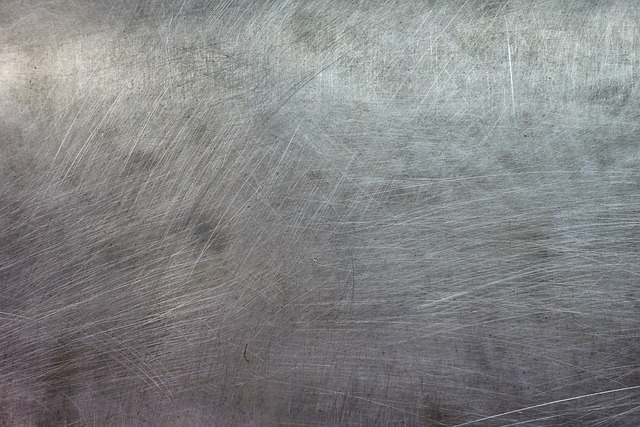Metal fabrication is a complex field that involves precise engineering and strict safety adherence, culminating in robust, resilient structures. The process begins with design and material selection—steel or aluminum—and progresses through cutting, shaping, welding, and finishing, all critical for achieving structural integrity. Advanced CAD and CAM software streamline the design phase, while automation, including robotic welding, enhances production efficiency and quality. Rigorous testing ensures compliance with safety standards. Material choice is paramount, as it affects durability, performance, weight, cost, and environmental impact. Stainless steel offers superior corrosion resistance, aluminum provides a lightweight alternative though may require anodizing for protection. Recent advancements in welding technologies like TIG and MIG have significantly improved structural integrity. Robotic welders provide unmatched precision, reducing the risk of failure and extending the lifespan of metal structures. Non-destructive testing is essential post-welding to ensure structural integrity. Automation and AI are revolutionizing metal fabrication, with IoT and predictive analytics optimizing processes for greater efficiency and reduced waste. These innovations align with a broader shift towards sustainable practices in the industry, supporting eco-friendly manufacturing across various sectors, including infrastructure and aerospace. Keywords: metal fabrication, precision engineering, structural integrity, advanced CAD and CAM software, robotic welding, high-quality results, rigorous testing, sustainable manufacturing.
Metal frames, platforms, and supports are integral components across various industries, demanding precision, durability, and innovative fabrication techniques. This article delves into the nuances of crafting these structures, starting with a comprehensive overview of the fabrication process, emphasizing material selection’s pivotal role in performance and longevity. Advanced welding methods are also examined to highlight their contribution to enhanced structural integrity. Furthermore, we explore cutting-edge advancements in automated metal fabrication that promise scalable production solutions, ensuring robustness and efficiency in metal construction applications.
- Understanding the Fabrication Process of Metal Platforms, Frames, and Supports
- Material Selection and Its Impact on Metal Frame Durability and Performance
- Advanced Techniques in Metal Welding for Enhanced Structural Integrity
- Innovations and Trends in Automated Metal Fabrication for Scalable Production
Understanding the Fabrication Process of Metal Platforms, Frames, and Supports

The fabrication of metal platforms, frames, and supports is a complex process that demands precision, expertise, and adherence to stringent safety standards. Skilled engineers and craftsmen employ advanced techniques in metalworking to transform raw materials into robust structures capable of withstanding environmental stressors and supporting significant loads. The journey from design conception to a fully operational support system involves the selection of appropriate metals, such as steel or aluminum, which are then cut, shaped, welded, and finished through processes like machining and grinding. Each stage is critical to ensure structural integrity; for instance, precision cutting using laser or plasma technology lays the foundation for a structure that is both durable and lightweight.
In the realm of metal fabrication, the use of computer-aided design (CAD) and computer-aided manufacturing (CAM) software has revolutionized the industry, allowing for precise calculations and adaptability in design alterations. These tools enable engineers to simulate the assembly process and predict potential issues before physical production begins. Moreover, the integration of automated systems, including robotic welding and advanced finishing techniques, not only enhances efficiency but also consistently produces high-quality results that meet or exceed industry standards. The final product is then subjected to rigorous testing to confirm its structural soundness, ensuring that it meets all necessary codes and regulations before being deployed in its intended application.
Material Selection and Its Impact on Metal Frame Durability and Performance

In the fabrication of metal platforms, frames, and supports, the choice of materials plays a pivotal role in determining the longevity and efficacy of the final product. The selection of metals such as steel alloys, stainless steel, or aluminum is influenced by factors including environmental conditions, load-bearing requirements, and corrosion resistance. For instance, stainless steel is often favored in environments with high humidity or exposure to salts due to its superior corrosion resistance compared to carbon steels. Its chromium content forms a protective layer that shields the metal from rust and degradation, ensuring durability even under harsh conditions. Conversely, aluminum offers a lighter weight alternative, which is advantageous in applications where portability or reduced structural mass are critical. Its natural oxide layer provides some corrosion resistance, though it may require anodizing for enhanced protection in certain settings. The selection of the appropriate material not only affects the performance and longevity of the metal structure but also its weight, cost, and overall environmental impact, making it a decision that requires careful consideration by engineers and designers in the field of metal fabrication.
Advanced Techniques in Metal Welding for Enhanced Structural Integrity

In recent years, advancements in metal welding techniques have significantly enhanced the structural integrity of platforms, frames, and supports within various industries. Techniques such as Tungsten Inert Gas (TIG) welding and Metal Inert Gas (MIG) welding are employed for their precision and strength, ensuring seamless connections that withstand environmental stressors and heavy loads. Additionally, the utilization of advanced robotics in automated welding has led to consistent and high-quality joints, reducing the likelihood of structural failure and increasing the longevity of metal constructions. These robotic systems work with a level of precision that is difficult for human welders to match, leading to safer and more efficient production processes. Furthermore, the integration of non-destructive testing (NDT) methods after welding further guarantees the integrity of the final product by identifying any potential defects or weaknesses within the metal joints. This comprehensive approach to metal fabrication ensures that the platforms, frames, and supports are not only robust but also reliable under various operational conditions. The application of these sophisticated welding techniques and NDT inspections is paramount in the manufacturing of metal structures, as they directly contribute to the overall safety and functionality of the end product.
Innovations and Trends in Automated Metal Fabrication for Scalable Production

Innovations in automated metal fabrication have revolutionized the production of platforms, frames, and supports, enabling scalable and efficient manufacturing processes. Advancements in robotic automation and artificial intelligence are at the forefront of this transformation, allowing for precise and repeatable cuts, welds, and finishes that were once the domain of skilled human artisans. These technologies not only enhance productivity but also contribute to a consistent quality output, reducing the margin for error and increasing safety in the workplace. The integration of Industry 4.0 technologies, including the Internet of Things (IoT) and predictive analytics, further streamlines operations, allowing for real-time monitoring and maintenance scheduling that minimizes downtime and optimizes resource allocation. As a result, manufacturers can now produce complex metal components at scale, adapting to fluctuating demand with agility while maintaining high standards of quality.
The shift towards fully automated systems in the metal fabrication sector is also marked by the adoption of advanced materials and process optimization techniques. These include the use of lightweight yet durable alloys that offer better structural integrity and performance under load, as well as 3D printing technologies that enable the fabrication of intricate designs with less waste. The integration of these innovations into the automated fabrication process not only enhances the capabilities of metal platforms, frames, and supports but also opens up new possibilities for design and application across various industries, from construction to aerospace. As the industry continues to evolve, the focus remains on developing solutions that are as sustainable as they are robust, aligning with global initiatives towards greener manufacturing practices.
Metal platforms, frames, and supports are critical components in various industries, from construction to manufacturing. This article has delved into the intricacies of their fabrication, emphasizing the significance of material selection for durability and performance, the advancements in welding techniques that enhance structural integrity, and the innovations driving automated metal fabrication towards scalable production. As industries evolve and demands increase, mastery over these processes becomes paramount. The insights presented underscore the importance of adopting cutting-edge technologies and methodologies to ensure safety, efficiency, and longevity in metal construction applications. With ongoing advancements, the future of metal fabrication holds great promise for meeting the diverse needs of a dynamic marketplace.
